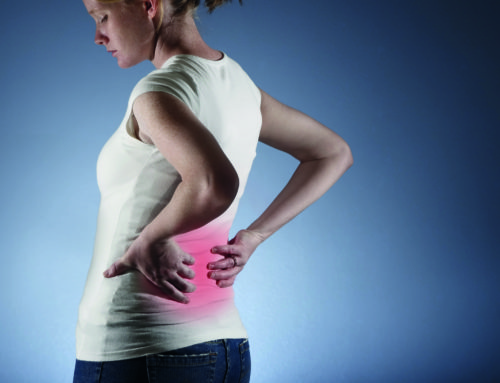Coeliac disease is a frequent and life-long autoimmune condition, caused by an abnormal reaction of the immune system to gluten – a group of proteins found in grains such as wheat, barley and rye – that is common in the European diet. Despite its significant prevalence, many people are unaware of just how common it has become. Luisa Mearin, Secretary of the European Society for Paediatric Gastroenterology, Hepatology and Nutrition, investigates how by boosting our understanding, we can reduce complications and pave the way to a brighter future for our young patients dealing with it.
What is Paediatric Coeliac Disease?
Coeliac disease can occur at any age, including in babies during weaning (once gluten has been introduced to their diet), in children, and in adolescence. When a child with coeliac disease eats gluten, their immune system reacts by damaging the lining of the small intestine.
Paediatric coeliac disease is now the most common food-related chronic disease among children in Europe, with one-in-100 sufferers in the majority of European countries, and in areas of heightened prevalence, as many as eight-in-100. (1) However, most children with coeliac disease are not properly diagnosed, due to the complex clinical picture of the disease. (2) With this rising prevalence, undiagnosed paediatric coeliac disease leaves a large population at risk of developmental issues and long-term associated health complications.
It’s a surprise to many experts that paediatric coeliac disease was considered a rare condition among children until recently. The reality is that it is commonplace among children of all ages, including adolescents, and this trend is only likely to continue moving into the future.
Risk Factors of Paediatric Coeliac Disease
Certain groups are at a heightened risk of developing paediatric coeliac disease. Having a first-degree relative with the condition makes you up to at least 10 times more likely to be a coeliac (3), and you are twice as likely to have the disease if you are female. (4)
Additionally, having type 1 diabetes, Turner syndrome, Down’s syndrome, autoimmune thyroid disease, Williams syndrome, or autoimmune liver disease, increases the chances of having paediatric coeliac disease. (5)
Until recently we had no knowledge of how to stop paediatric coeliac disease from developing, finding no association with breast-feeding patterns, infection, or lifestyle factors, for instance. Prospective randomised research projects have shown that it’s not possible to lower the risk by earlier or later introduction of gluten into the diet of young children.
Observational studies have also shown this for breast-feeding. However, recent studies within paediatric coeliac disease indicate that there may be ways to lower the risk of developing the condition through the diet. New research presented at the 52nd European Society for Paediatric Gastroenterology, Hepatology and Nutrition (ESPGHAN) Annual Meeting held in June of this year suggested that high fibre intake during pregnancy reduces the risk of paediatric coeliac disease in children. (6) The Norwegian study, which assessed over 88,000 children between 1999-to-2009, found that the risk of the condition was eight per cent lower per 10g increase in fibre intake during pregnancy. The ESPGHAN look forward to further studies in this field.
Secondary prevention by early diagnosis and treatment is also possible and in the first instance we should look to drive this forward. Screening programmes for young children offer an effective step in achieving this.
Signs and Symptoms of Paediatric Coeliac Disease
Paediatric coeliac disease may present with a large variety of non-specific signs and symptoms. It’s worth stressing the importance of diagnosis among those children with less clear symptoms, as well as those with obvious gastrointestinal indications. (7) Symptoms will not necessarily be severe, and in fact many children with the condition only present mild symptoms, such as abdominal pain, constipation, occasional vomiting, and flatulence. (8)
Key symptoms, which also act as the key health complications associated with paediatric coeliac disease, include chronic or intermittent diarrhoea, growth problems, weight loss, delayed puberty, amenorrhoea, iron-deficiency anaemia, nausea or vomiting, chronic abdominal pain, cramping or distension, chronic constipation, chronic fatigue, recurrent mouth ulcers, and abnormal liver tests.
Diagnosis and Treatment of Paediatric Coeliac Disease
In cases where a child is suspected of having coeliac disease, they should see a GP before a coeliac disease blood test is carried out to detect coeliac disease antibodies. (9)
Following a positive diagnosis, the only treatment is to completely remove gluten from the diet. This means that children with coeliac disease must strictly avoid eating any food containing gluten, including grains such as wheat, barley and rye, and some children may also be sensitive to oats. While this might seem unfortunate, one of the benefits of this treatment is that there is no need for any medicines or supplements, and with the exception of products containing gluten, a normal healthy balanced diet can be adopted.
The role of the dietician is particularly important in advising parents and children in how to follow a healthy gluten-free diet appropriate for the age of the child.
Promoting and Achieving the Early Diagnosis of Paediatric Coeliac Disease
Despite being relatively easy to detect and treat, diagnostic delays can often reach 10 years because symptoms can be non-specific, and other conditions may be diagnosed, like irritable bowel syndrome or ‘functional disorders’. (10)
Another issue is that other conditions, like cancer and obesity, tend to dominate conversations over paediatric coeliac disease given their severity on young people. Certain children with coeliac disease suffer poorly before they get diagnosed, but even so, it’s viewed as a condition which can be controlled by diet and does not involve any medication, which diminishes its standing as a focal point for health development. Consequently, paediatric coeliac disease is yet to achieve the same level of attention from the public or the medical community.
There is simply not enough coeliac-specific research being undertaken to match the growing demand. We launched a new appeal in the UK last year to try and pull together a £5 million fund to drive forward research because coeliac disease is not drug-treatable so does not command the commercial interests of big pharma. What we have had to do is make the case that actually, this is an important area and it is worth the investment. Our understanding of how the immune programme works in paediatric coeliac disease could be used as a model for many other autoimmune diseases, which is a strong case for extra investment. (11)
This in turn will support our wider ambitions for greater public awareness of the condition, healthcare professionals’ understanding of symptoms and high-risk groups, and the establishment of national detection programmes for the early identification of paediatric coeliac disease.
References
1. Annali di igiene: medicina preventiva e di comunità. 2014. Burden of Celiac Disease in Europe: a review of its childhood and adulthood prevalence and incidence as of September 2014
2. National Review Gastroenterology Hepatology. 2015. Coeliac disease and gluten-related disorders in childhood
3. Gut. 2006. Recent advances in coeliac disease
4. Journal of Paediatric Gastroenterology and Nutrition. 2008. Celiac Disease
5. ESPGHAN. 2012. European Society for Paediatric Gastroenterology, Hepatology, and Nutrition Guidelines for the Diagnosis of Coeliac Disease
6. Størdal, K. et al. 2019. Maternal gluten and fibre intake during pregnancy and risk of childhood celiac disease: the Norwegian mother and child cohort study. Presented at the 52ndAnnual Meeting of ESPGHAN
7. ESPGHAN. 2012. European Society for Paediatric Gastroenterology, Hepatology, and Nutrition Guidelines for the Diagnosis of Coeliac Disease; Archives of Disease in Childhood. 2015. Socioeconomic variation in the incidence of childhood coeliac disease in the UK
8. British Journal of General Practice. 2014. Diagnosis of coeliac disease in children in primary care and clinical implications
9. ESPGHAN. 2012. European Society for Paediatric Gastroenterology, Hepatology, and Nutrition Guidelines for the Diagnosis of Coeliac Disease
10. Interreg Central Europe. 2016. Focus on Celiac Disease
11. Gastroenterology. 2017. High Incidence of Celiac Disease in a Long-term Study of Adolescents with Susceptibility Genotypes








